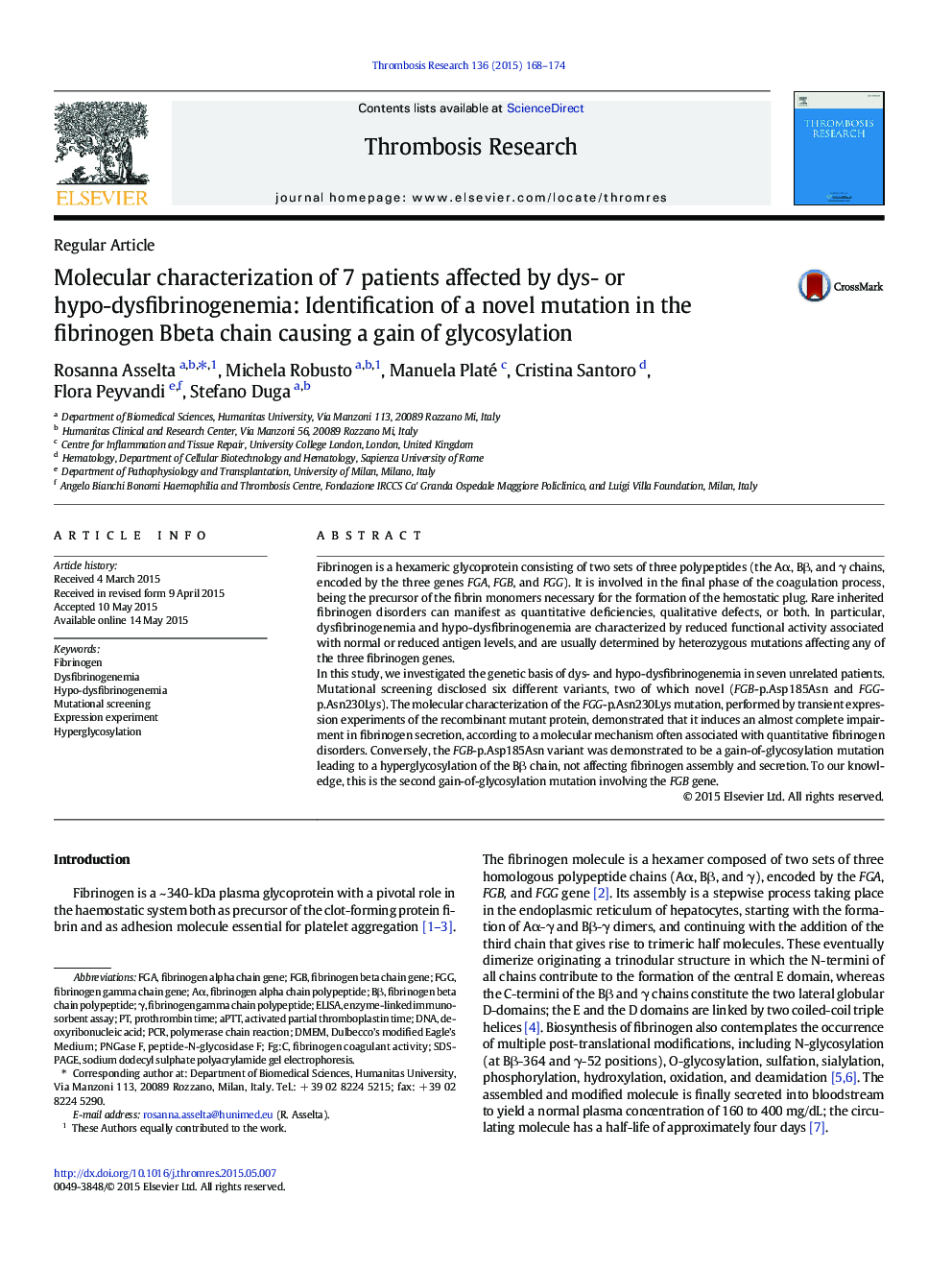| کد مقاله | کد نشریه | سال انتشار | مقاله انگلیسی | نسخه تمام متن |
|---|---|---|---|---|
| 6001179 | 1182945 | 2015 | 7 صفحه PDF | دانلود رایگان |
- We performed a genetic screening of 7 patients with qualitative fibrinogen disorders
- We disclosed two novel mutations: FGB-p.Asp185Asn and FGG-p.Asn230Lys
- We functionally characterized the 2 novel mutations by expression experiments
- FGB-p.Asp185Asn causes a hyperglycosylation of the Bβ chain
- FGG-p.Asn230Lys causes an impairment of fibrinogen secretion
Fibrinogen is a hexameric glycoprotein consisting of two sets of three polypeptides (the Aα, Bβ, and γ chains, encoded by the three genes FGA, FGB, and FGG). It is involved in the final phase of the coagulation process, being the precursor of the fibrin monomers necessary for the formation of the hemostatic plug. Rare inherited fibrinogen disorders can manifest as quantitative deficiencies, qualitative defects, or both. In particular, dysfibrinogenemia and hypo-dysfibrinogenemia are characterized by reduced functional activity associated with normal or reduced antigen levels, and are usually determined by heterozygous mutations affecting any of the three fibrinogen genes.In this study, we investigated the genetic basis of dys- and hypo-dysfibrinogenemia in seven unrelated patients. Mutational screening disclosed six different variants, two of which novel (FGB-p.Asp185Asn and FGG-p.Asn230Lys). The molecular characterization of the FGG-p.Asn230Lys mutation, performed by transient expression experiments of the recombinant mutant protein, demonstrated that it induces an almost complete impairment in fibrinogen secretion, according to a molecular mechanism often associated with quantitative fibrinogen disorders. Conversely, the FGB-p.Asp185Asn variant was demonstrated to be a gain-of-glycosylation mutation leading to a hyperglycosylation of the Bβ chain, not affecting fibrinogen assembly and secretion. To our knowledge, this is the second gain-of-glycosylation mutation involving the FGB gene.
Journal: Thrombosis Research - Volume 136, Issue 1, July 2015, Pages 168-174
